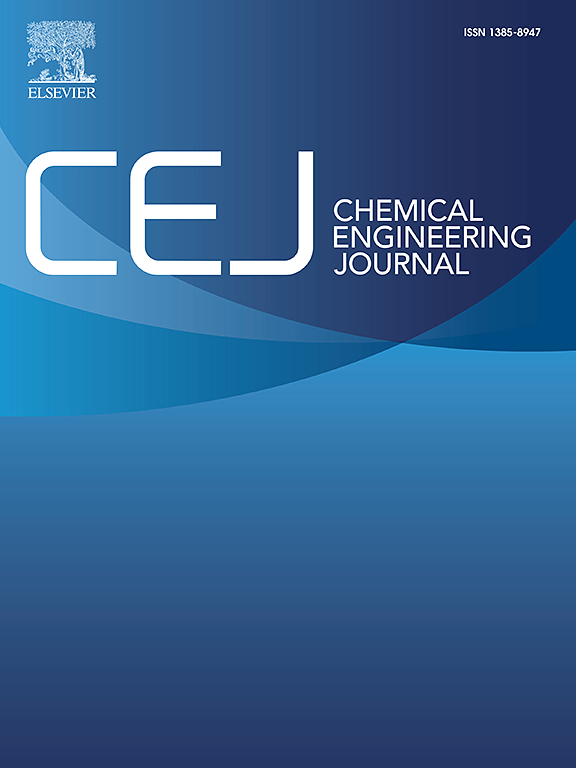Standard strategy for developing multicomponent nanopesticides: From gene function analysis to co-delivery nano-platform construction
IF 13.2
1区 工程技术
Q1 ENGINEERING, CHEMICAL
引用次数: 0
Abstract
The continuous screening of high-efficiency RNAi targets is labor-consuming and time-costing, which constrains the fast commercialization of RNA pesticides. Thus, incorporating synergistic active ingredients via co-delivery nano-platform offers a promising solution without the need for high-efficiency RNAi targets. The current study aimed to propose a standard strategy for developing multicomponent nanopesticides. The function analysis revealed that the decapentaplegic-like (Dpp) participated in fatty acid biosynthesis and cuticle formation, and its RNAi resulted in molting failure and death in destructive green peach aphids. However, the morality caused by Dpp RNAi could not meet the actual demand, and thus a potential synergistic pesticide spirotetramat (SPI) was introduced to assemble with star ploycation (SPc) and dsDpp to construct a co-delivery nano-platform. The SPc could assemble with SPI into SPI/SPc complex, and the dsDpp could be further adhered on the surface of complex through electrostatic interaction, which formed stable spherical particles with nanoscale size (322.95 nm) and positive charge (28.22 mV). Notably, the SPI/SPc/dsDpp complex displayed better adhesion performance on plant leaves, and thus the plant uptake of SPI/SPc/dsDpp complex was remarkably improved in vivo and in vitro. Meanwhile, the SPI/SPc/dsDpp complex exhibited amplified contact area on aphid cuticle, and its translocation was improved across the aphid cuticle/cell membrane. Importantly, the stomach and contact toxicity of SPI/SPc/dsDpp complex was the strongest with the highest aphid mortalities of 94.5 %–96.6 %. The co-delivery nano-platform improved both initial action time and overall bioactivity, addressing the short life disadvantage of dsDpp and slow-acting property of SPI. Our work proposed a standard strategy for designing multicomponent nanopesticides, which could facilitate the fast commercialization of RNA pesticides.
开发多组分纳米农药的标准策略:从基因功能分析到共递送纳米平台的构建
持续筛选高效RNAi靶点耗时耗力,制约了RNA农药的快速商业化。因此,通过共递送纳米平台结合协同活性成分提供了一个有希望的解决方案,而不需要高效的RNAi靶标。目前的研究旨在提出一种开发多组分纳米农药的标准策略。功能分析表明,decapentapleic -like (Dpp)参与脂肪酸生物合成和角质层形成,其RNAi可导致破坏性绿桃蚜虫脱皮失败和死亡。然而,Dpp RNAi引起的道德无法满足实际需求,因此,引入一种具有潜在协同作用的农药螺虫(SPI),与星形定位(SPc)和dsDpp组装,构建共递送纳米平台。SPc可与SPI组装成SPI/SPc配合物,dsDpp可通过静电相互作用进一步粘附在配合物表面,形成具有纳米级尺寸(322.95 nm)和正电荷(28.22 mV)的稳定球形颗粒。值得注意的是,SPI/SPc/dsDpp配合物在植物叶片上表现出较好的粘附性能,从而在体内和体外显著提高了植物对SPI/SPc/dsDpp配合物的吸收。同时,SPI/SPc/dsDpp复合物在蚜虫角质层上的接触面积扩大,其在角质层/细胞膜上的转运能力增强。重要的是,SPI/SPc/dsDpp复合物的胃毒性和接触毒性最强,蚜虫死亡率最高,为94.5 % -96.6 %。共给药纳米平台提高了初始作用时间和整体生物活性,解决了dsDpp寿命短和SPI作用缓慢的缺点。本研究提出了一种多组分纳米农药设计的标准策略,可促进RNA农药的快速商业化。
本文章由计算机程序翻译,如有差异,请以英文原文为准。
求助全文
约1分钟内获得全文
求助全文
来源期刊

Chemical Engineering Journal
工程技术-工程:化工
CiteScore
21.70
自引率
9.30%
发文量
6781
审稿时长
2.4 months
期刊介绍:
The Chemical Engineering Journal is an international research journal that invites contributions of original and novel fundamental research. It aims to provide an international platform for presenting original fundamental research, interpretative reviews, and discussions on new developments in chemical engineering. The journal welcomes papers that describe novel theory and its practical application, as well as those that demonstrate the transfer of techniques from other disciplines. It also welcomes reports on carefully conducted experimental work that is soundly interpreted. The main focus of the journal is on original and rigorous research results that have broad significance. The Catalysis section within the Chemical Engineering Journal focuses specifically on Experimental and Theoretical studies in the fields of heterogeneous catalysis, molecular catalysis, and biocatalysis. These studies have industrial impact on various sectors such as chemicals, energy, materials, foods, healthcare, and environmental protection.
 求助内容:
求助内容: 应助结果提醒方式:
应助结果提醒方式:


